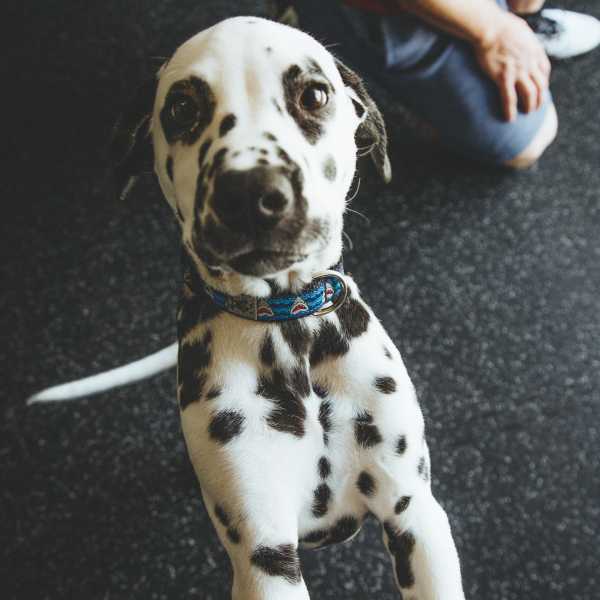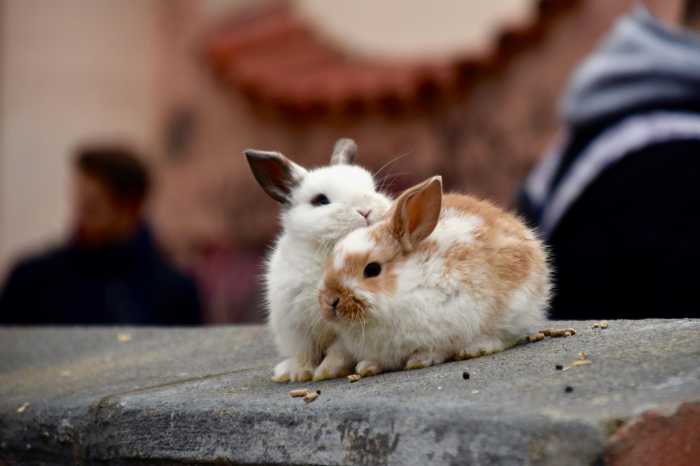
PetsRadar - Nine small pets that are great for kids
Posted on 25 February, 2022

Photo by Lorna Ladril on Unsplash
Written by Dave Harfield for PetsRadar
While dogs and cats are often the most popular choice for those looking to welcome a furkid into the family, for children who aren’t quite ready for that level of responsibility, our favourite small pets for kids can be a great alternative.
Often referred to as ‘pocket pets’, these small creatures include fish, reptiles, rodents, birds, and small mammals. They require just as much love as any other animal but unlike a cat that may scratch or a dog that may be quite boisterous, their petite size can make them feel safer and more approachable for young children.
Introducing pets into your child’s life early can have a lot of advantages. Research has shown that children who develop positive feelings towards animals at a young age often have higher self-esteem and confidence and more readily display empathy and compassion.
Small pets for kids can also teach them many valuable life lessons that will help prepare them for events that they’ll encounter as they grow. Pocket pets tend to have shorter lifespans than their bigger brothers and sisters, allowing young children to be introduced to conversations about illness and death early on. It also helps them to develop a respect for all living things and gives them a connection to nature.
Your child’s enthusiasm for getting a pet may not last, so it’s important to sit down as a family and decide on a small pet that’s going to suit their age as well as your lifestyle and the amount of time you have to care for an animal. There are financial considerations too as you’ll likely need to invest in an indoor rabbit hutch or cage for small mammals, rodents, and birds, or a small fish tank if you decide to take the aquatic route.
In this guide, we’ll take you through our favourite small pets for kids so that you can make the best decision for you and your family.
Gerbils
This desert dweller is a great pet for kids. Although similar in appearance to hamsters, gerbils are surprisingly distinct in terms of their habits and behaviours. Not least of all, they’re diurnal (active during the day), so they’re far more entertaining for younger children, who will be sleeping when hamsters come to life. Gerbils do need a companion or two, however, and they love to dig, so expect a bit of mess.
GERBIL INFO
Gerbillinae: (various species)
Class: Mammalia
Diet: Omnivore
Lifespan: 2–4+ years
Adult weight: 1.8–3.5oz
Guinea pigs
Like rabbits, guinea pigs are natural group animals that need to live with at least one other of their kind. Their accommodation should offer lots of space to run, places to hide and, if possible, some lawn to graze on (you can find a little collapsible pen for them to take them outside and let them roam - but make sure they can't escape). They enjoy interaction with humans, so you should factor in some daily time to be with them. Typically reaching five or six years old, guinea pigs are a good in-between option between shorter-lived rodents like mice and longer-lived alternatives like chinchillas.
GUINEA PIG INFO
Cavia porcellus
Class: Mammalia
Diet: Herbivore
Lifespan: 4–6+ years
Adult weight: 2.2lb
Mice
Mice require very little, making them a perfect candidate for smaller homes. If you keep a couple or a small group, they’re fairly self-sufficient socially too – just avoid putting males together as they will fight. Given their undemanding nature and short lifespan of one to two years, mice make a fantastic first pet for older children.
HOUSE MOUSE INFO
Mus musculus domesticus
Class: Mammalia
Diet: Omnivore
Lifespan: 1–2 years
Adult weight: 0.4–1.4oz
Birds
For the budding aviculturist, a feathered friend is likely to prove a real delight, and with so many different breeds, you’re bound to find the perfect fit. If you’re after a colourful bird that can tolerate some handling and is easy to look after, Budgies top the list. Most Budgies are very sweet and can be hand-fed, so if your child wants a bird they can interact with, it’s a great choice. Older children may prefer the charming Cockatiel, which loves being out of its cage and can be trained to talk and do tricks.
BIRD INFO
M. undulatus
Class: Aves
Diet: Omnivore
Lifespan: 5–8 years
Adult weight: 1.1–1.4oz
Hamsters
While some of the larger ‘small and furries’ benefit from outdoor accommodation, hamsters can live indoors all year round so are ideal for apartments or houses without gardens. They’re also happy to live on their own, which helps to keep costs down. Do bear in mind that these animals are naturally nocturnal so they can make a lot of noise at night. Think carefully before positioning their cage in a bedroom!
HAMSTER INFO
Cricetinae (various species)
Class: Mammalia
Diet: Omnivore
Lifespan: 2–3 years
Adult weight: 5.3oz
Rats
They still have something of a bad rep, but the humble rat can be a very loving and surprisingly smart member of your family, one capable of learning numerous tricks – in fact, some people call them the ‘dogs of the rodent world’. Despite what you might expect, they’re also among the cleanest pets, though they do have a distinct odour that may not be for you.
DOMESTIC/FANCY RAT INFO
Rattus norvegicus domestica
Class: Mammalia
Diet: Omnivore
Lifespan: 2–3 years
Adult weight: 12.3–23.9oz
Degus
Not sure if you’re looking at a rat, a chinchilla, or a hamster? It could well be a degu – a rodent native to Chile. These are very active critters and therefore appreciate lots of recreational accessories in their homes. Although happy to be handled, a word of warning: never pick up or pull on a degu’s tail. As a self-defence mechanism, they’ve evolved to be able to shed this appendage and that would certainly cause quite a fright!
COMMON DEGU INFO
Octodon degus
Class: Mammalia
Diet: Herbivore
Lifespan: 6–8+ years
Adult weight: 6–10.6oz
Rabbits
Rabbits are some of the most demanding small mammal pets, so never rush into buying one. As social creatures, they’re happiest living in small groups, so you should be prepared to take on at least two. They also require plenty of space for exercise and can live for well over a decade. The flipside to their lengthy lifespans means that they can truly become long-term members of your family home, developing distinct personalities and providing years of affection. Rabbits are a better option for adults and older children as they’re naturally timid and not keen on being cuddled, which given how cute they are can be difficult for younger children to understand.
RABBIT INFO
Oryctolagus cuniculus
Class: Mammalia
Diet: Herbivore
Lifespan: 8–12 years
Adult weight: 2.2–4.4lb
Fish
Many young children find the colours of fish to be utterly captivating and they’re a safe choice as the fact that they can’t be taken out of the water means there’s zero chance your child (or the fish!) is going to come to any harm. We recommend choosing a hardy and low-maintenance breed like the stunning Siamese Fighting Fish. Striking yet tough, they can survive in just about any water conditions.
SIAMESE FIGHTING FISH INFO
B. splendens
Class: Osphronemidae
Diet: Carnivorous - zooplankton and small crustaceans
Lifespan: 2–5 years
Adult weight: Up to 2lb
Dave Harfield
Dave has over 20 years experience in publishing during which he launched many successful magazine titles including How It Works, All About Space and All About History. He’s also pet parent to a retired police dog called Rebel, who can’t work anymore due to a health condition. When’s not busy trying to amuse a boisterous, three-year-old German Shepherd, Dave's the Editor on PetsRadar.
To read the original article by Dave Harfielf for PetsRadar, please visit: www.petsradar.com/features/nine-small-pets-that-are-great-for-kids
Tags:



